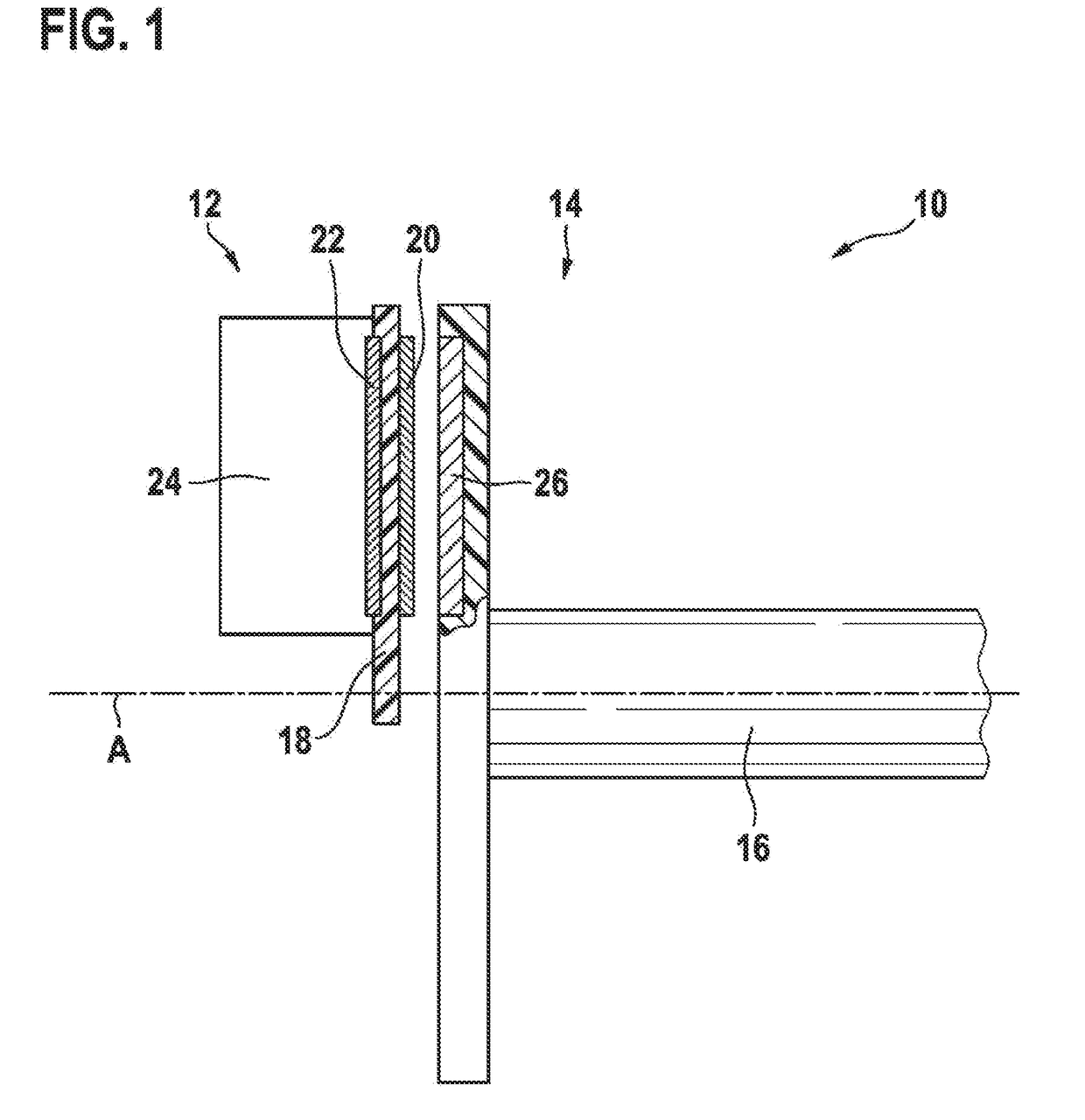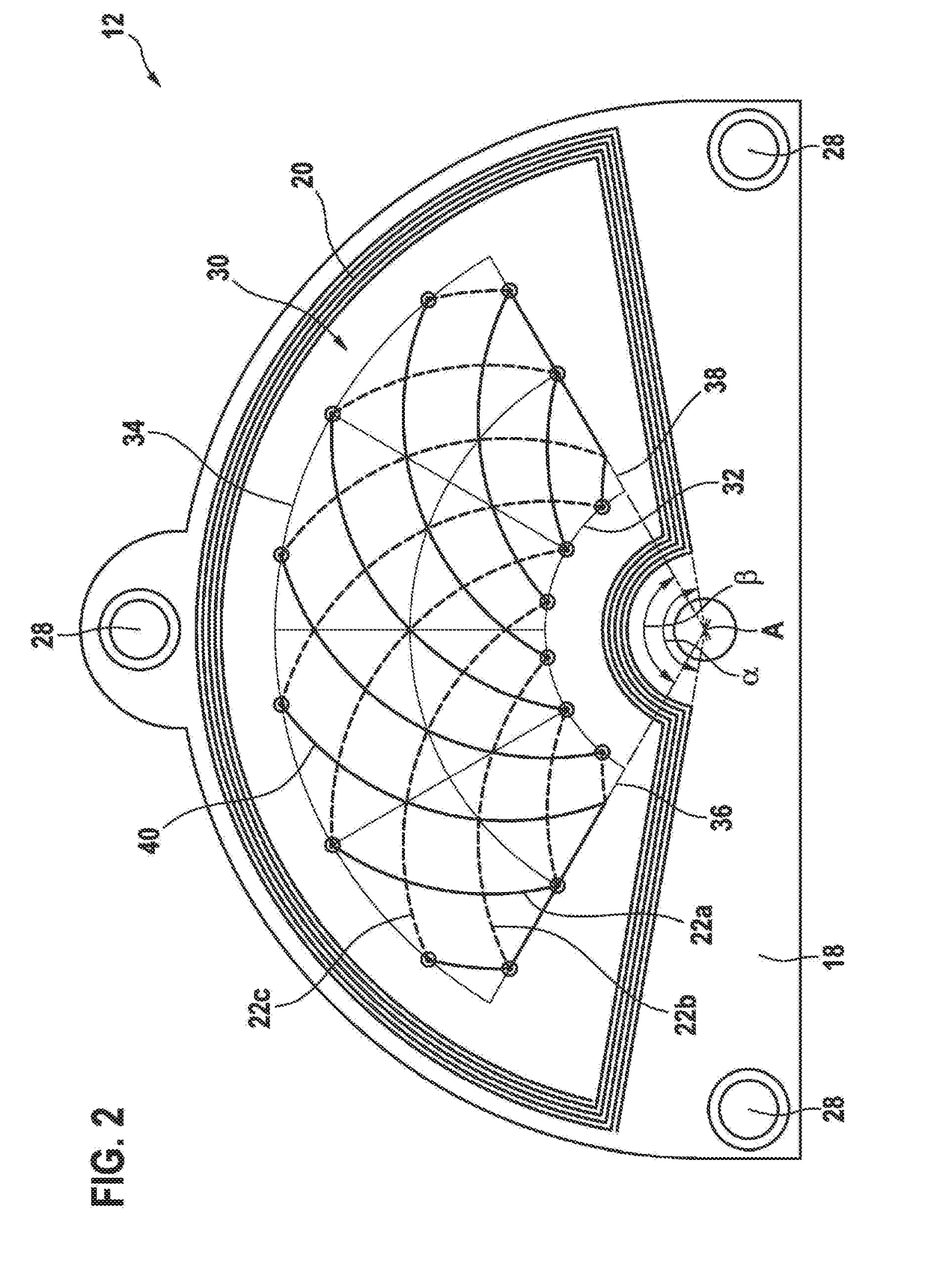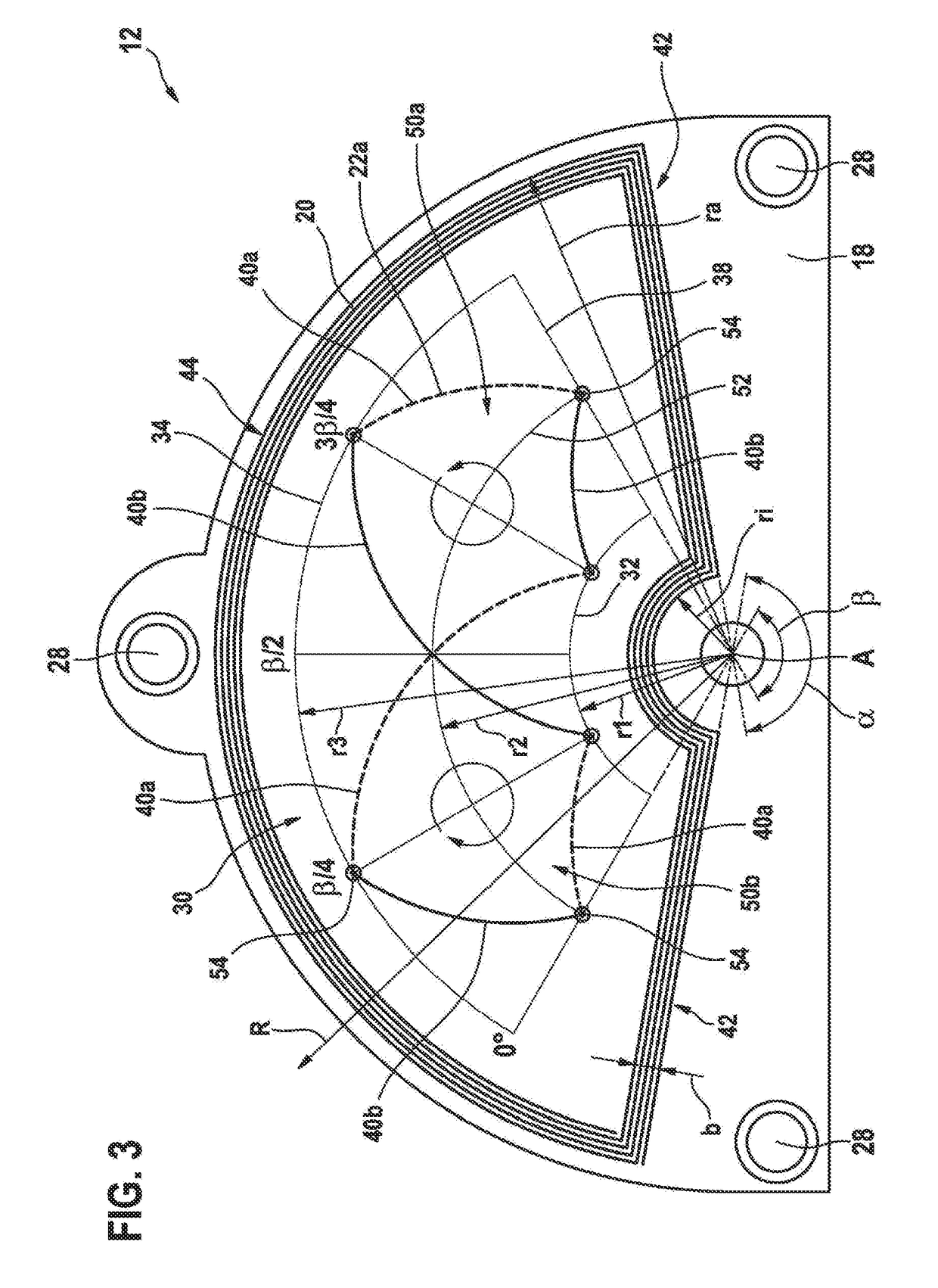Rotational Angle Sensor
a technology of rotational angle sensor and sensor, which is applied in the direction of electrical/magnetically converting sensor output, measuring devices, instruments, etc., can solve the problems of high cross sensitivity of rotational angle sensor and sensitive to interference, and achieve low construction space, easy evaluation, and robust and inexpensive angular rotation.
- Summary
- Abstract
- Description
- Claims
- Application Information
AI Technical Summary
Benefits of technology
Problems solved by technology
Method used
Image
Examples
Embodiment Construction
[0044]FIG. 1 shows a rotational angle sensor 10 comprising a stator element 12 and a rotor element 14. The rotor element 14 may be fastened on a shaft 16 of a component, such as for instance a throttle valve, a motor, a camshaft, a gas pedal, etc., or be provided by this shaft 16. The shaft 16 is rotatable about the axis A and the stator element 12 lies opposite the rotor element 14 in the corresponding axial direction. For example, the stator element 12 is fastened on a housing of the component.
[0045]The stator element 12 comprises a circuit board 18, on which a transmitting coil 20 and a number of receiving coils 22 with conductor tracks are configured on the circuit board 18. The conductor tracks of the coils 20, 22 may be located on both sides of the circuit board 18. The conductor tracks may be electrically connected to one another through the circuit board by means of vias (vertical interconnect accesses). On the circuit board 18 there may be further components for an evaluati...
PUM
 Login to View More
Login to View More Abstract
Description
Claims
Application Information
 Login to View More
Login to View More - R&D
- Intellectual Property
- Life Sciences
- Materials
- Tech Scout
- Unparalleled Data Quality
- Higher Quality Content
- 60% Fewer Hallucinations
Browse by: Latest US Patents, China's latest patents, Technical Efficacy Thesaurus, Application Domain, Technology Topic, Popular Technical Reports.
© 2025 PatSnap. All rights reserved.Legal|Privacy policy|Modern Slavery Act Transparency Statement|Sitemap|About US| Contact US: help@patsnap.com



